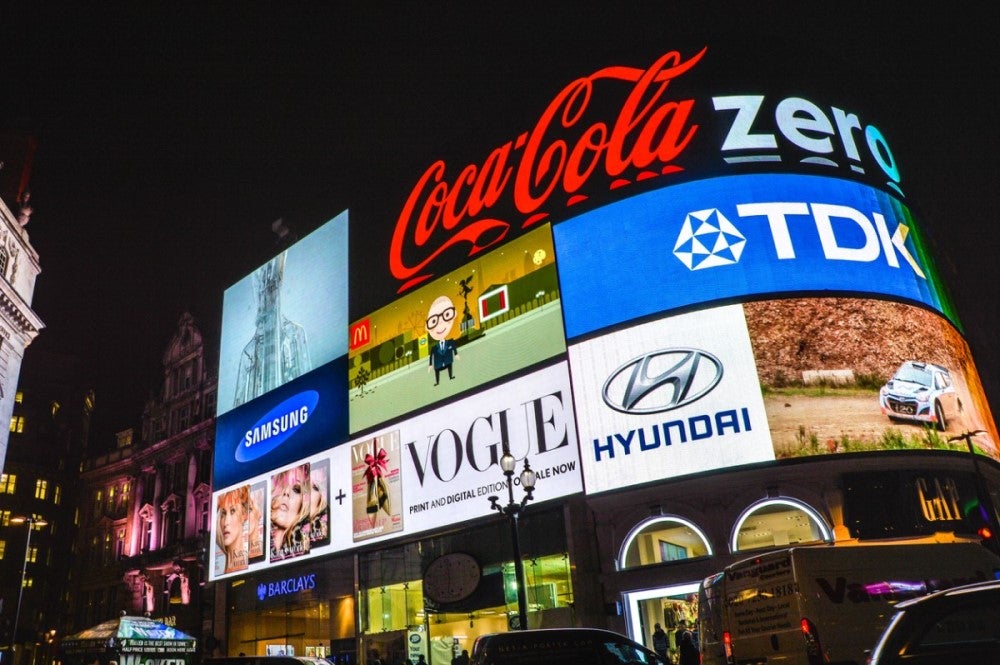Embracing technology at a time of high competition and low budgets
In a world where things are changing so quickly, how can agencies ensure they're backing the right horse?

The advertising industry has always adapted to changing circumstances. Reflecting the society in which we live is, after all, the ad team’s job. But it seems like recent developments have the potential to disrupt the ad industry – and adtech – more than ever before.
At the same time as transformative technologies, including automation of ad buying and generative AI tools such as ChatGPT, are coming into the industry, there’s a general tightening of belts that has a knock-on effect across the sector. It’s already a competitive area, and the economic headwinds that are tamping down on consumer spending mean that budgets from brands trying to compete for the few customers left buying are lower than ever.
Agencies are being expected to do more with less. And with a range of tools and services available to them, it can be difficult to pick a winner, rather than an also-ran. So how can agencies do it smartly?
Picking a winner in the ad race
“Technology is one of the major tools we have to tell stories,” says Oliver Feldwick, head of innovation at The&Partnership, a WPP partner, “but a tool is only as good as its user.” Feldwick explains that tools adopted intelligently, with good sensitivity and creativity can create new and compelling stories. He says that, without the right strategy, tools can end up being “used to bludgeon people over the head with bad content.” For that reason, it’s important that technology is always implemented in collaboration with, rather than as a replacement for, the human. “Imaginative, expressive technology can and must be used to make better content, but only in partnership with creative users,” says Feldwick.
There’s little doubt that artificial intelligence (AI) and machine learning (ML) technology are changing the game, says Rich Astley, chief product officer at ad agency GroupM Nexus. “While media agencies have been using smart and AI-driven products for years, the impact of the latest generation of AI-powered tools will be far greater, leading to considerable improvements in campaign performance,” he says.
While there’ll still be a need for human ingenuity when it comes to the creative aspect, some elements of the media planning side of things can be outsourced to tech that automatically knows when to book deals to maximise impact. “AI will take up much of the heavy lifting, enabling media planning teams to retain focus on the strategic direction of a campaign,” says Astley.
Investing the right amount at the right time
One of the challenges is that there are so many providers offering so many different products that it can be difficult to discern which ones are going to give them a head start in the race, and which will leave them stalled at the starting line. Particularly given the budgetary challenges among clients – which has a knock-on effect on ad industry budgets – investing in the right tools is difficult.
Nevertheless, it’s time to be bold, says Astley. “In times of economic uncertainty, increased scrutiny over ad budgets and disruptive technological change, allocating investments and resources to the right solutions will allow media agencies to gain a remarkable competitive edge and deliver real value for brands,” he says.
Clever investment in and embracing of technology can also help agencies do more with less, as it enables them to help brands create a unified journey for customers across advertising channels. “Once, as an industry, we understand these emerging ad-driven digital platforms better, the programmatic tools are there to run coordinated campaigns,” says Clare Beddow, head of commercial strategy at programmatic media partner agency MiQ. “Campaigns that don’t duplicate audiences across different platforms; that bring incrementalities against linear TV reach – that’s something that’s high on every brands’ advertising agenda.”
Embracing new channels
Besides linear TV and its non-linear equivalent, there are a plethora of potential routes to connect with, and communicate to, customers. Filtering out which of those aren’t worth their time from those that are is a challenge. So how should agencies do it?
“New channels will always emerge and often proclaim themselves as a new paradigm of consumer relationship, but the principles of channels usually remain the same: if a space can consistently get good quality attention and that space can be used to express a brand, then we have an opportunity,” says Feldwick. One of the world’s biggest booms in 2022 was the metaverse, buoyed by Mark Zuckerberg throwing his weight behind the concept and renaming his company from Facebook to Meta as evidence of his support for the idea this would be the future in which we live.
For advertising experts, somewhere seen as so central to the future of everyone’s lives would seem like an obvious choice to invest. According to a 2022 report by Citi, the metaverse could have five billion users by 2030. And yet the metaverse has faded into the background in favour of the next big thing – generative AI – in recent months.
Adapting to new worlds
Still, the metaverse is worth sticking with, reckons Feldwick. “The metaverse and web3 are both a bit small and a bit early to have a consistent level of audience attention,” he admits. But it’s early days, and time will tell whether that remains the same, or if time spent – and therefore opportunities to sell – increases. “As those new channels emerge, they will increasingly be integrated into modern marketing plans,” he says. More than one in eight CEOs expect to invest the most in Web3 and the metaverse in the coming year, according to Publicis Sapient.
At present, it’s difficult for ad agencies to leap head-first into the space because the technology is relatively underdeveloped. Platforms have not yet been standardised, resulting in fragmented territories within the metaverse. And the hardware used to access it has yet to roll out widely. But that’s likely to happen soon.
How to present advertising is still to be decided in this uncharted territory. “New channels tend to bring new and experimental ways to tell stories,” Feldwick says. “Over time, we learn what works, what sticks and what doesn’t. The metaverse is just an extension of this evolution – new virtual worlds where people may spend more time, and as a result, brands may spend more time.”
The evolution of the advertising landscape
What are the latest developments in the advertising industry? What are the ad spend trends? How have customer behaviours and attitudes changed?

Harnessing the power of unified adtech platforms
For ad agencies with clients, offices and teams across the world, it is now more and more critical to be backed by a system that consolidates data, processes and knowledge

Global advertising agencies are facing continued pressures on costs, revenues and talent pools – as well as the growing issue of competing against smaller and potentially nimbler digital-led rivals.
Meanwhile, the scale of consolidation and M&A within the industry is driving a need for disparate teams, siloed datasets and extensive client campaign inventory to be quickly integrated and made accessible worldwide.
Managing both client-facing and internal operations in real time, and on time, can be tricky but according to Konstantin Burkovtsev, product manager at Star, there is a solution. He believes this key challenge can be met through the implementation of a single unified adtech platform, rolled out across an agency’s global footprint.
“Usually this is designed to solve scattered technology and knowledge problems among large-scale companies; for those operating across a number of regions and countries with multiple divisions, local peculiarities and thousands of users,” Burkovtsev explains.
He adds that a unified adtech platform can help facilitate compliance with new privacy regulations, ensuring guidance or best practice is observed for campaign management or media planning through regular monitoring.
Having a single tailored platform, Burkovtsev argues, is the only way to adapt to evolving trends, channels, tastes and demands. It can also play a deeper role in allowing ad agencies to create meaningful connections with their audiences no matter what territory they are in, while also providing tighter control over global campaign performance.
Such unifying technology also makes it far easier to streamline the management of personal information within campaigns, achieving compliance with the various legal and regulatory requirements in different countries.
Streamlining the scattered solutions
Burkovtsev’s Star colleague, business development director Stephen Noble, suggests a unified response eliminates the complexity of sharing different pieces of information across an entire advertising organisation wherever it has people based.
This can include information on their audiences, their spending and variations in privacy or legal regulations, he says.
A unified adtech platform will also foster “better communication and efficiencies” among teams, he adds, through consolidating data, streamlining workflows and identifying areas for more targeted personalisation.
However, Noble does accept the challenge of their rollout is convincing global agency heads that the benefits outweigh the costs, especially when they may have already sunk investment into scattered platforms and vendors in different countries. Convincing employees of the vision is another practical barrier to push through, he admits, suggesting the need for ongoing collaboration, training and integration across teams and agencies. “Over time you see the benefits as everyone eventually moves in the same direction. There can be a reluctance. It’s the fear of the great unknown,” he adds.
“But if a transformation is structured and handled correctly, then people should be able to adopt systems, understand the benefits, be clear in their day-to-day role and know their current and future outputs.”
Taking back control
Burkovtsev believes a unified adtech platform also speeds up campaign development and compliance time with the shared tools created within it. “You streamline the process for each team working under the umbrella of the parent company,” he argues, “with a unified platform giving access to APIs and code repositories with a description of what is feasible to do with each component.”
And he adds how the unified approach can also help with objectives and KPIs. This can offer full transparency and valuable alignment both ways – from agency to client and client to agency. “The platform can also provide methods and frameworks for how to approach these, ensuring internal marketing goals are aligned with what the agency is doing overall. This builds transparency and connects performance, budgets and agency spending into one interface. Everyone can see what is happening in real time,” he explains.
You can’t stifle creativity
Burkovtsev and Noble suggest it is that scope for extra creativity – bolstered by the incoming addition of AI – that also makes a unified adtech platform a major step forward for global agencies.
For example, AI might quickly and easily generate an image, animation or explanation from a short set of questions or instructions typed in. For those without any technical or creative skills to do that autonomously, it means they can still share their ideas and be heard.
“Clearly, we don’t want to lose people’s creative skills,” states Noble. “Advertising has always been a very people-centric business. But across our industry ecosystem, there are now many different players, bits of kit, data sources and channels. We can’t work in those silos.”
Looking forward, Burkovtsev and Noble both agree consumers are now seeking personalisation and omnichannel experiences; this means agencies must constantly experiment with new technologies and approaches for products, services and marketing campaigns.
Noble suggests a structured unified platform allows creativity to flow more freely from agency teams. “These platforms do not take away core craft skills,” he promises.
Can AI solve advertising’s real business problems?
The race to harness artificial intelligence in all industries is hotting up and ad agencies are hoping it can make all of their repetitive tasks and problems go away

Revolutionising repetitive daily tasks, opening up more time for creativity – these are the benefits advertising executives are hoping for as they integrate AI into their campaigns.
AI could quickly spot changes in advert prices, identify optimal places for ads to be featured and streamline governance across an agency and all its business units.
This isn’t crystal ball gazing. Tools such as ChatGPT and Midjourney are already being activated within agencies of all shapes and sizes to see how they can contribute to their work.
Oliver Feldwick, head of innovation at The&Partnership, suggests AI will bring smart efficiencies ahead across “every part of the creative process”. He believes it will also augment strategic insight development so teams are free to expand on their creative thinking.
In its contributions to variations in personalisation and optimisation, AI will usher in an era of “serendipitous new inspiration and ideas”, he adds.
However, Feldwick warns: “These tools need careful use by a capable human. Understanding the strengths, and even more importantly the weaknesses, can ensure it’s used in the right way.”
Across its long history, advertising has embraced many changes and transformations, and many suggest AI is just another in that long line. This is one reason why experts believe those working in the industry should not be too afraid of its arrival, its ability to transform workflows and its effect on most job roles.
Their view is it should simply be seen as another tool in the process. Its role is to deliver efficiencies, not to replace humans.
Pitching in with pitches
Efficiency is where Feldwick sees a place for generative AI in pitches, with short-term uses seeing it add “polish” to work while refining “early stage pitch thinking at a lower cost and effort”.
He says: “This should have the benefit of letting good, clear, compelling thinking and creativity shine through and reduce the load on pitching teams.
“This could also start to level the playing field. Bigger pitching teams who throw more money and production at their response may find these tools allow smaller teams to provide equal levels of polish.”
But he adds: “One challenge to all agencies is when everyone has access to the same tools, it is more important than ever to rigorously and relentlessly push into new and exciting areas and not just settle for an obvious, well-polished answer.”
Richard Exon, founder of independent creative agency Joint, says there is a distinction to be made right now between generative AI and process AI.
“The latter holds success in areas where scale, speed and volume are key, such as rapid translation of web copy into multiple languages and brand safety, assurance and compliance checks,” he explains.
But generative AI “is more provocative”, Exon argues, “essentially forcing us to ask what it is to be human.” He believes generative AI can help gather inputs to a brief more comprehensively, “provided you really know how to make prompts work for you”. However, he says it can’t replace the need for human involvement in asking ‘what’s my strategy?’ and ‘what’s my big idea?’
“The human imagination, with creativity born of imperfection, will always lead and AI will always support,” Exon adds.
AI as an additional resource
Those core craft skills will remain in human hands for much time to come, most experts suggest. AI will instead take on more routine and less creative business tasks such as real-time data analysis, social listening and the use of natural language processing to analyse customer feedback and sentiment across channels.
In the future, AI-powered ad creation and design could become more prominent, but those within the industry concede it would take a lot of time and prompts to fully explain brand guidelines and tone of voice to an AI-driven system.
However, Nick Reid, EMEA MD at DoubleVerify, an ad verification platform working with the likes of Vodafone, TikTok and Twitter, suggests AI does have a key role at the “heart of solutions that solve advertising pain points”.
For example, this would include brand safety solutions to classify content, ensuring these classifications represent the actual content and context of a page. He feels this would not only help brands place their ads in relevant and safe environments but also allow publishers to monetise pages effectively.
“There’s also much more that can be done leveraging AI in the future,” he says. “We believe AI will help advertisers optimise attention through a real-time, automated approach.”
Gerard Murnaghan, VP international at Sprout Social, references the company’s recent research that shows the vast majority (86%) of marketing, communications and customer care leaders believe AI and machine learning are critical for long-term success.
But he warns the industry: “To see adoption at scale, business leaders will need the right support in place to plot a course for how AI works within their existing organisation. Agencies have a key role to play in helping brands to manage this transition and maximise the potential of emerging AI tools.”


